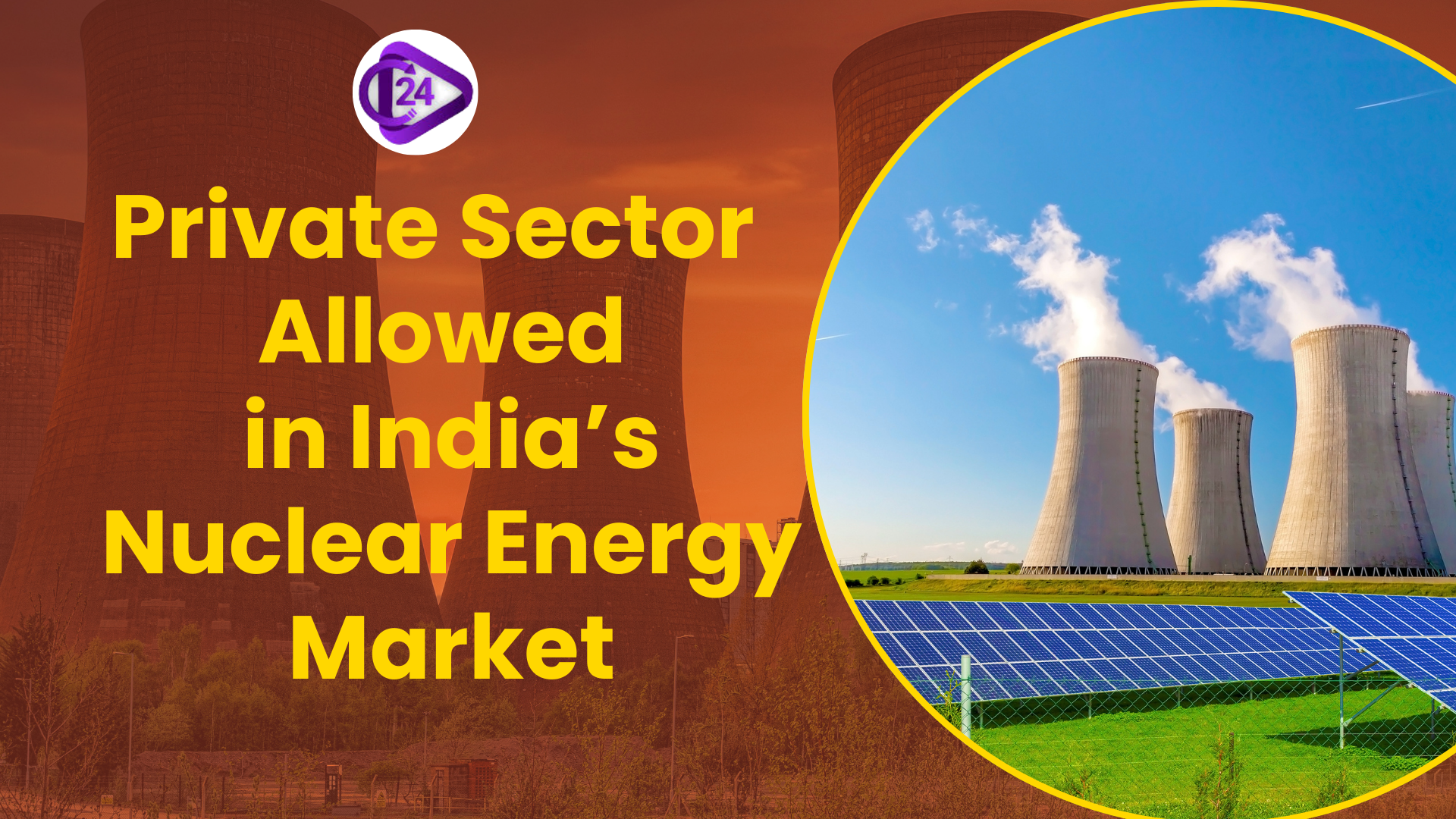
As part of its plans, the Indian government will adjust important laws in nuclear energy to let private and foreign entities be involved in generating nuclear power. At present, operating power plants with nuclear fuels has been permitted only to state-owned firms like NPCIL and NTPC. The new laws will also modify the liability requirements under the Civil Liability for Nuclear Damage Act, 2010, so that more Americans become interested in investing and sharing advanced technology here.
Summary:
-
India is easing rules and establishing a cap on liabilities to allow both foreigners and private firms to invest in nuclear energy.
-
The purpose behind this action is to grow India’s nuclear power and promote greater cooperation between India and the US.
Details:
Legal Reforms:
-
Civil Liability for Nuclear Damage Act, 2010 sets rules for a maximum liability, depending on the contract amount and imposes a time limit for bringing liability claims.
-
The Minorities Act, 1962 was amended so that private and foreign groups could invest a share of equity in nuclear energy projects.
Reason for the initiative
-
Nuclear power in India is handled by the government, without any role for the private sector.
-
These companies have opted out because they are concerned about legal issues when handling radioactive materials.
-
The reliability of laws drives foreign investment and allows India to gain from the Indo-US Civil Nuclear Agreement.
A key advancement has been made in the U.S. recently.
-
Holtec International was given permission to transfer the technology for Small Modular Reactors to Indian companies Tata Consulting Engineers and L&T.
-
Makes it possible for India to produce SMRs at home, leading to better development of nuclear technology.
Objectives of India’s nuclear capacity.
-
Grow from 8,180 MW in the present day to 22,480 MW in 2031 and 2032.
-
The country intends to increase its nuclear energy capacity to 100 GW by 2047.
-
Using nuclear power partly to deal with rising electricity demand, as well as with the rise of renewable energy.
-
Supports the Indian government’s target of reducing emission intensity by 44% by 2030 and having half of its energy generated from non-fossil fuels.
What is Nuclear Energy?
-
All over the world, wind energy is the next biggest form of low-carbon electricity after hydropower.
-
In 2019, 30% of the global supply of low-carbon electricity came from nuclear power.
-
Last year, nuclear power contributed 9.8% of the electricity generated which is a decrease of 0.4 percentage points compared to 2020.
-
Nuclear energy was responsible for a greater portion of energy in 1980 than in 1990, but its use has dropped from that point on.
The Nuclear Energy Mission in India
-
The goal is for green energy to make up 55 GW by 2047, while also working toward India’s energy vision and strategy.
-
Currently, the country’s nuclear power capacity is 8,180 MW which will rise to 22,480 MW by the years 2031-32.
-
They are planning to create SMRs and set up at least five units by 2033.
-
The Atomic Energy Act, 1962 and Civil Liability for Nuclear Damage Act, 2010, were both revised to let in companies and foreign participants.
-
Cooperate with companies to build Bharat Small Reactors, improve SMRs and work on new nuclear technology.
-
Creating SMRs at BARC is aimed at transforming coal plants and offering electricity to remote areas.
-
Indigenous Technology: Design small 220 MW PHWR BSRs, high-temperature gas-cooled reactors to produce hydrogen and molten salt reactors with thorium.
-
It helps India achieve its goal to supply 500 GW of clean energy and use 50% renewable resources by 2030 as announced at COP26.
Conclusion:
The amendments will change the country’s policy by allowing more foreign investment and nuclear technology, while also increasing its clean energy sources. Through these reforms, India further aligns with the United States, while also getting closer to achieving its goals in energy and climate.
UPSC Prelims Practice Questions
Q.1 Consider the following statements regarding nuclear energy reforms in India:
-
The Civil Liability for Nuclear Damage Act, 2010 is being amended to ease liability norms for foreign investors.
-
Private companies in India were already allowed to operate nuclear power plants before the latest reforms.
-
India aims to generate 100 GW of nuclear power by 2047.
-
Holtec International is transferring nuclear fusion technology to Indian companies.
Which of the statements given above are correct?
A) 1 and 3 only
B) 1, 2 and 4 only
C) 1, 3 and 4 only
D) 2 and 4 only
Q.2 Which of the following Acts are being amended to facilitate private and foreign participation in India's nuclear energy sector?
- The Atomic Energy Act, 1962
- The Civil Liability for Nuclear Damage Act, 2010
- The Environment Protection Act, 1986
- The Minorities Act, 1962
Select the correct answer using the code below:
A) 1 and 2 only
B) 1, 2 and 4 only
C) 2 and 3 only
D) 1 and 4 only



 NITI Aayog’s ‘We Rise’ Empowers Women Entrepreneurs
NITI Aayog’s ‘We Rise’ Empowers Women Entrepreneurs Harsh Sanghavi Appointed Gujarat Deputy Chief Minister in Major Cabinet Reshuffle
Harsh Sanghavi Appointed Gujarat Deputy Chief Minister in Major Cabinet Reshuffle India Ranks 102nd in Global Hunger Index 2025: Hunger Remains a Serious Challenge
India Ranks 102nd in Global Hunger Index 2025: Hunger Remains a Serious Challenge Kaziranga Director Sonali Ghosh Becomes First Indian to Win IUCN Innovation Award
Kaziranga Director Sonali Ghosh Becomes First Indian to Win IUCN Innovation Award Assam Government Introduces CM-FLIGHT Scheme for Improved Global Career
Assam Government Introduces CM-FLIGHT Scheme for Improved Global Career India’s First Bullet Train to Launch by August 2027, Mumbai–Ahmedabad
India’s First Bullet Train to Launch by August 2027, Mumbai–Ahmedabad Goa Launches Majhe Ghar Housing Regularisation Scheme
Goa Launches Majhe Ghar Housing Regularisation Scheme IUCN Recognizes India’s First Dugong Conservation Reserve in Tamil Nadu
IUCN Recognizes India’s First Dugong Conservation Reserve in Tamil Nadu Cyclone Shakti Brings Heavy Rain Forecast for Mumbai and Konkan Region
Cyclone Shakti Brings Heavy Rain Forecast for Mumbai and Konkan Region Underwater Road Tunnel in Assam
Underwater Road Tunnel in Assam






